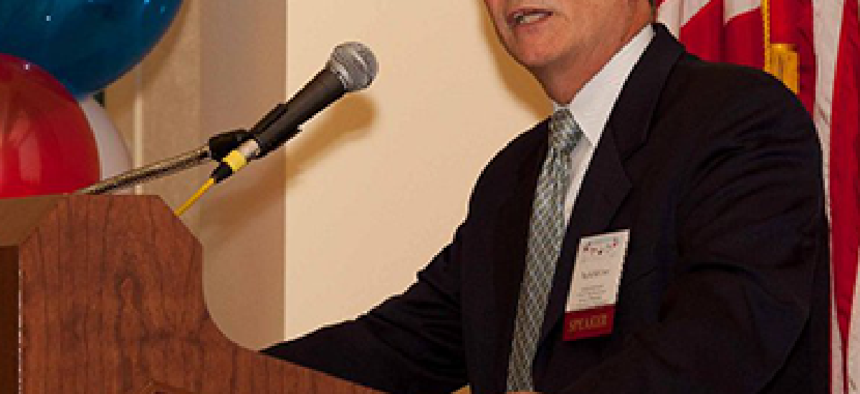Advising the next president on federal IT

Veterans of federal IT policymaking and management have some suggestions for the winner of November's election.

GSA's David McClure, shown here at an unrelated event, advises the next president to emphasize citizen engagement. (Photo: GSA)
Two prominent public service organizations laid out recommendations for post-election government IT reform on Thursday, calling for more interagency collaboration, clearer governmentwide goals and a concerted attempt to rebuild public trust in government.
This set of recommendations, the third installment in a joint project between the National Academy of Public Administration and the American Society for Public Administration called "Memos to National Leaders," focused on government reorganization and information technology and transparency – with IT and transparency receiving the lion’s share of attention from the audience packed into NAPA’s Washington D.C.-based headquarters.
“Transparency is not an end game,” said guest speaker David McClure, associate administrator of the General Services Administration Office of Citizen Services and Communications.
“Transparency drives innovation and it drives engagement,” McClure said. “I think we've demonstrated that in the last 2 to 3 years. If we're going to rethink how government operates, we're going to have to engage the citizens of this country.”
Right now, many citizens don’t trust their government, said Daniel Chenok, executive director of the IBM Center for the Business of Government.
But Chenok, who was the lead for technology issues on President Obama’s transition team, said transparency combats the mistrust many Americans have for their government. Significant progress has been made in the last four years, he said, but there is still work to do.”
“If our partners, the citizens and businesses, have trust in the process of government and the information the government uses, it will really increases the value of those services,” Chenok said..
Alan Balutis, Director in the Cisco Internet Business Solutions Group and Chair for the Memos Committee on Information Technology and Transparency, said the federal government will undergo major changes on many levels in the coming months, with a presidential vote looming, new leaders in Congress likely and transition teams waiting to take action.
But all those converging challenges, Balutis said, create opportunities for the next presidential administration – whether Obama or challenger Mitt Romney -- and new Congress “to dramatically reshape the bureaucracy by leveraging IT to forge a 21st century government.”
To ensure those challenges are met, Balutis said, the committee recommended that government leaders:
• Issue a statement of principles and an action plan for implementing an enhanced digital government agenda.
• Foster a dynamic citizen enhancement program.
• Reorganize the office of the Chief Information Officer.
• Improve IT project management.
• Rebuild trust in government through greater transparency.
• Improve information security while ensuring personal privacy.
On the topic of government reorganization, Allen Lomax -- who chaired the group’s committee on that topic, said fragmentation and overlap of government programs “are serious problems” and called for Congress and the president to consolidate efforts.
However, Lomax said full structural government reorganization would take “five to ten years,” and said “virtual reorganization” could be a better and more cost-effective initial step toward ultimately reorganizing the structural government. He also noted it would take a bipartisan effort between the President’s administration and Congress – something he admitted has “in recent years proven to be elusive” – for a successful government reorganization to be realized.
Success, Lomax said, will require a bridging of the “leadership gap” in interagency councils and it will cost money up front, too. The dividends of such a reorganization would be realized further down the line.
“The President and Congress will need to understand that any structural reorganization will most likely have little to no immediate impact on dollar savings,” Lomax said in his memo. “It will take years to achieve any potential dollar savings and reduce the budgets of the affected agencies and their programs.”
Ultimately, Lomax said “the use of structural or virtual reorganizations should not be viewed as a choice of one over the other,” but used together to make federal programs more efficient and effective, producing better results for the American people.
“The next administration and Congress should use both steps to help eliminate or reduce the overlap, duplication and fragmentation among federal programs and agencies,” Lomax said.
The fourth and final installment of recommendations in Memos to National Leaders will be unveiled on Nov. 9. All the memos that have been released to date are available online at www.memostoleaders.org.






